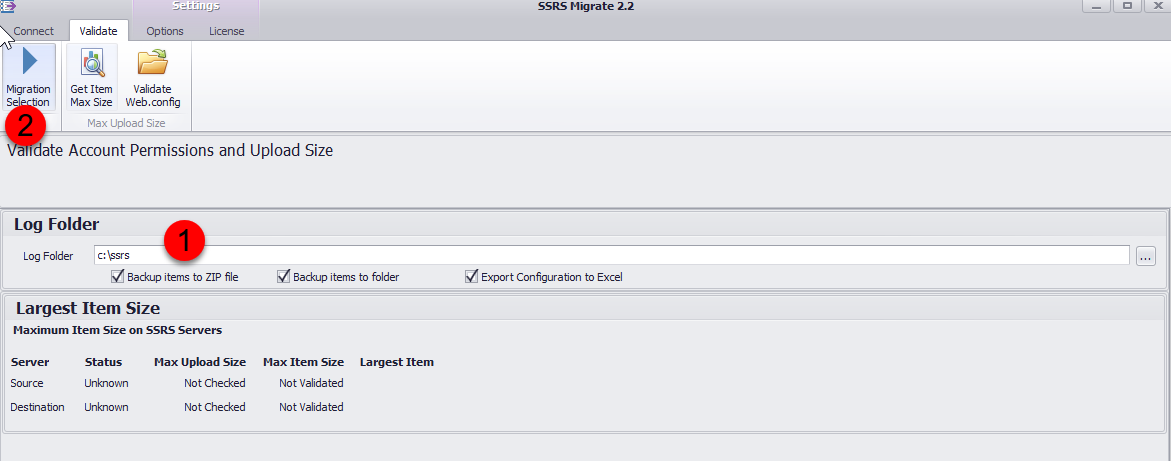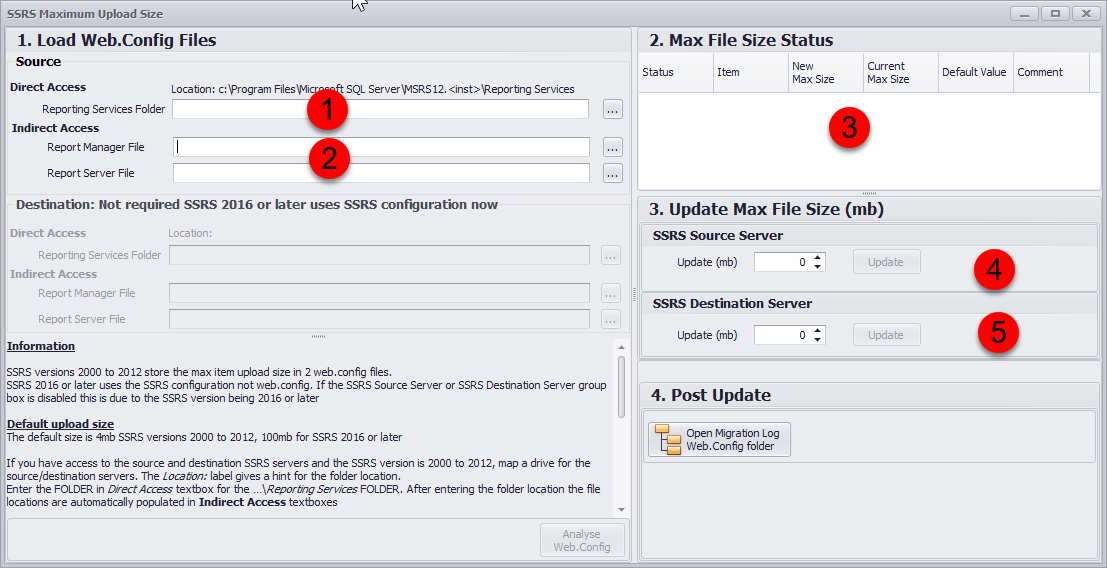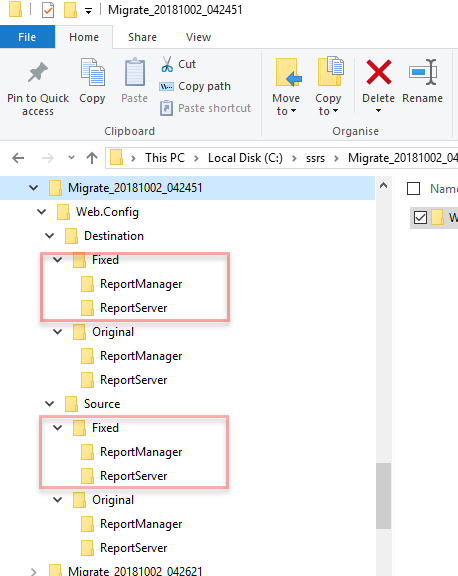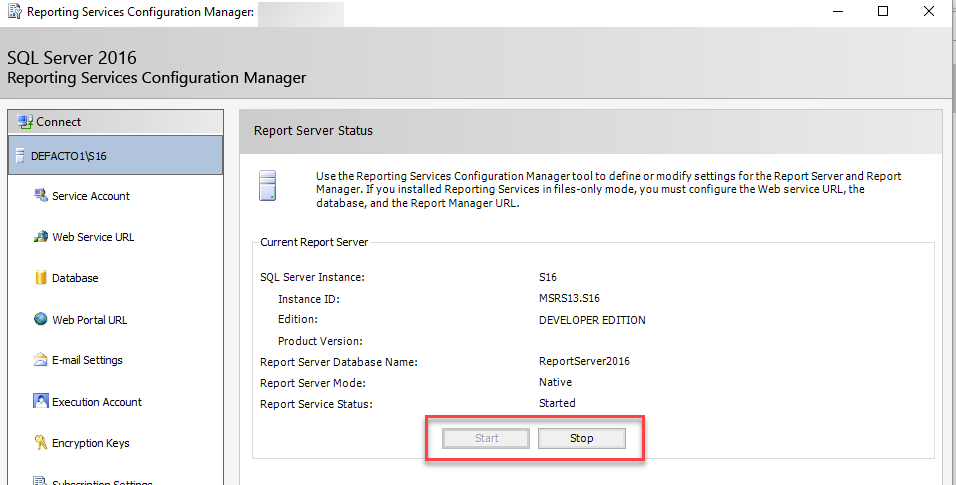
Enter a log folder destination. Under this folder will be created migration log folder in the format Migrate_yyyymmdd_hhmmss. Each time a migration is performed another Migrate folder is created. For more details about logging see Migration Log
1.Enter the root Log folder location (you can used the ellipsis button to choose the folder (at the right of the text box)
2.Press Migration selection button to move to the Selection screen

Validation
This is optional but for a successful migration Verify the maximum upload/download size. By default SSRS 2000-2014 has a 4mb limit. This is set in the web.config file. For SSRS 2016 or later this is set in the SSRS settings (this can be seen in SSMS when connecting to the report server).
Get item Max Size.
This is optional, but if the max upload size has been modified then this should be checked. For simplicity you can click the Get Item Max Size to get the current max size information for the source and destination SSRS Servers.
below is an example of SSRS 2014 source and SSRS 2016 Destination servers. The Source status is unknown as the size limit is stored in the web.config file so the config files need to be opened. SSRS Migrate will allow the review and update of a COPY of the file. It will not update the live version of the web.config file. To verify click Validate web.config button and follow the instructions on the screen to verify the size.

Validate web.config files

Note the destination is grayed out in the screenshot above. This is due to the SSRS version being 2016 or later, and does not store the max size in web.config.
the running web.config files are NOT updated. A copy is taken and placed in the migration log folder, these are the web.config files that are edited
1.If you have direct access to the SSRS Server map a drive to the folder. Look at the label above the textbox this will show you the location (c:\ may be different eg could be d:\ and and so on). If this is entered it will auto populate items in (2)
2.Indirect access. Copy the web.config files for the report manager and report server to a local folder destination. Enter the file details (use the ellipsis button ... )
3.Current status of the source and destination sizes.
4.Option to change the max size for the source web.config
5.Option to change the max size for the destination web.config
Updating Web.Config Files
Press Open Migration Log Web.Config folder button
If any web.config files have been updated you need to copy these back to SSRS server. After copy the files the SSRS Server must be restarted in the Reporting Services Configuration Manger
In this folder you will find a web.config folder and under this folder will be the source and destination folder. You need to copy the items from the Fixed folder to the SSRS Server.


